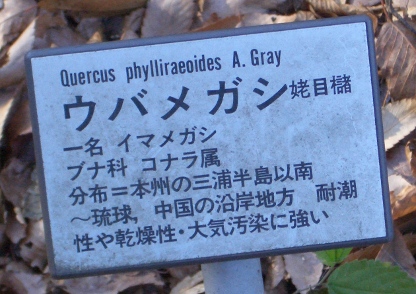
 |
| Tree name sign in a park |
|---|
The usual native name of plants and animals is called its wamei (和名) ("Japanese name"). The convention followed by many references is to write all wamei in katakana, regardless of whether the animal or plant has a kanji name. This may even extend to humans, with the Human Genome Project known as the hito genomu keikaku (ヒトゲノム計画) in Japanese. The scientific name, that is the Latin name, called the gakumei (学名) of a plant or animal is usually written in Roman letters.
There is no official rule on how to write animal or plant names. Writing them in kana arose from the practice of scientists of always doing so. This is because of the number of difficult-to-read kanji, because many of the names have no kanji equivalent, and because many of them are also foreign words which would be written in katakana anyway (see What is katakana used for?). Similarly, geological names are usually written in katakana.
See also What noises do animals make?
Copyright © 1994-2025 Ben Bullock
If you have questions, corrections, or comments, please contact Ben Bullock or use the discussion forum / Privacy policy

|

|

|

|

|
| Book reviews |
Convert Japanese numbers |
Handwritten kanji recognition |
Stroke order diagrams |
Convert Japanese units |